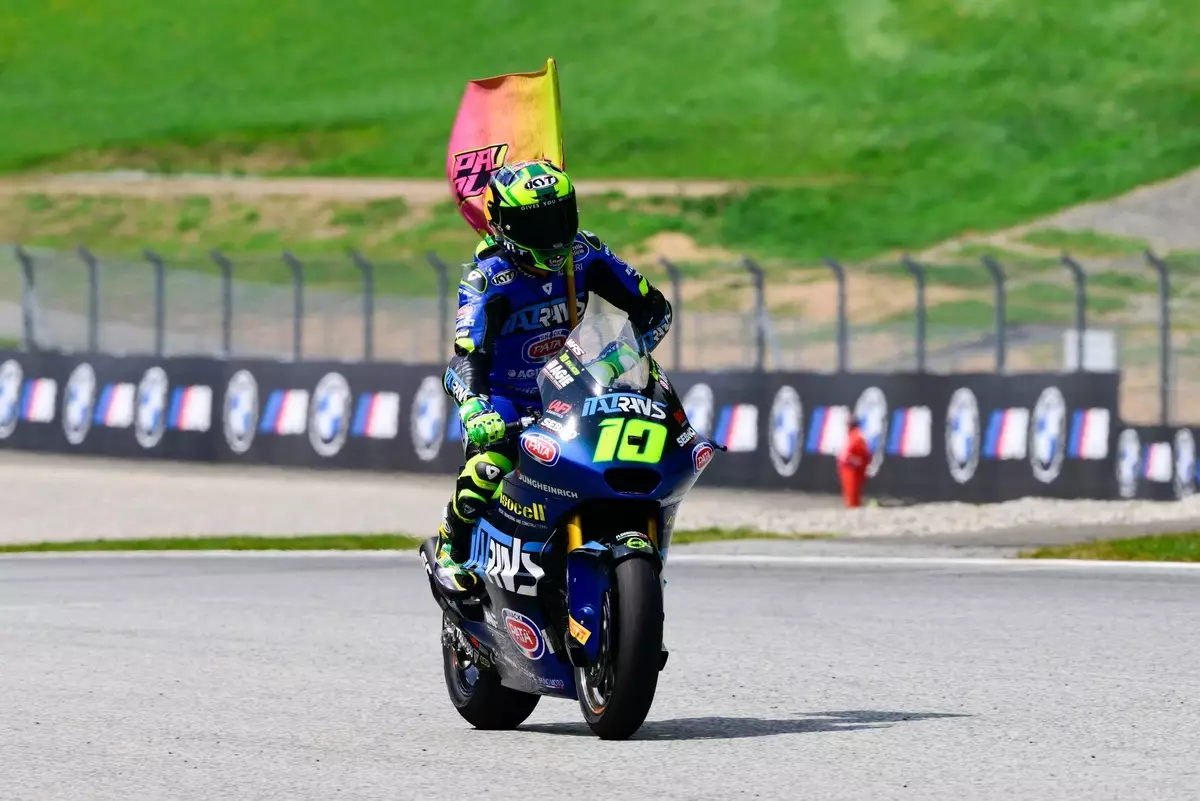In the fast-paced, fiercely competitive world of MotoGP, few stories capture the imagination as powerfully as that of Diogo Moreira. At just 21 years old, this Brazilian prodigy stands on the cusp of a seismic shift in the sport’s landscape. His impending move to the premier class isn’t merely about personal achievement; it signifies the dawn of a new chapter where talent transcends nationality, and strategic decisions aim to reshape the sport’s commercial and racing paradigms. Moreira’s ascension, seemingly imminent and backed by reputable manufacturers, signals more than just individual success—it showcases how relentless ambition and strategic planning can turn a young rider’s career into a catalyst for broader change.
Much of MotoGP’s history has been rooted in European dominance, with occasional forays from Asian and American racers. Moreira’s signing serves as a potent reminder that the sport’s global appeal is expanding, and rider pipelines from South America are beginning to emerge again. These shifts are driven not purely by organic talent but also by the strategic interests of teams and manufacturers eager to tap into emerging markets, especially as MotoGP prepares for its 2026 revolution with new technical regulations. Moreira’s entry, therefore, isn’t happenstance; it’s emblematic of a sport evolving toward a more diversified and commercially vibrant future.
Strategic Moves in a Complex Landscape
The decision by Honda, and its sister team LCR, to bring Moreira into MotoGP for 2025 reflects a calculated gamble that the young Brazilian can both elevate his own career and bolster Honda’s global presence. This transition will likely redefine the relationship among manufacturers, sponsors, and riders. Notably, Honda’s commitment involves a long-term vision—an ambitious three-year contract designed to prepare Moreira not just for immediate success but for the looming arrival of the 2027 engine regulations.
Interestingly, this move likely means the conclusion of Somkiat Chantra’s promising but inconsistent tenure at LCR, with his injury woes and performance struggles prompting Honda to pivot toward fresh talent. It underscores a broader trend in MotoGP: teams are willing to take risks on young talent with high potential rather than sticking to established riders who may no longer fit their strategic visions. The sidelining of Idemitsu as the team’s title sponsor further emphasizes a shifting focus toward international expansion and market relevance, especially as the sport looks to re-establish its South American roots with Moreira’s debut.
This strategic reshuffling isn’t solely about individual talent; it’s a chess game that involves national identities, sponsorship dollars, and future fan engagement. Honda’s gamble appears to be motivated by a desire to align with a rider who can resonate in a burgeoning market—Brazil—where the sport seeks renewed growth and visibility. With the return of MotoGP to Brazil on the horizon, the timing couldn’t be better: Moreira’s presence on the grid could spark a new wave of enthusiasm and investment in South American motorsport, reminiscent of the legendary Alex Barros era.
Breaking Down Misconceptions: Nationality vs. Merit
Despite the excitement surrounding Moreira’s transition, it’s essential to challenge the narrative that his nationality is the main reason behind his promotion. His assertion that his success stems solely from performance and talent deserves serious consideration. It’s easy to fall into the trap of seeing nationality as a short-cut to opportunities—yet, history shows that in the ruthless world of MotoGP, only consistent hard work and results pave the way.
Furthermore, Moreira’s relationship with Yamaha and its Brazilian division appears more as a practical arrangement than a decisive factor in his rise. His dominant victories in Moto2, especially his recent triumph at the Austrian Grand Prix, clearly demonstrate his capability to perform under pressure. These results, combined with Honda’s strategic interest, suggest that his advancement is rooted in merit that aligns with the sport’s intrinsic competitive values.
This perspective challenges the stereotype that national identity alone can influence professional opportunities in MotoGP. Instead, Moreira’s story underscores that genuine talent, combined with strategic positioning, is what ultimately opens doors. His stance also signals maturity; he acknowledges the complexities of racing politics while remaining focused on the ultimate goal—excelling in the world’s premier motorcycle racing category.
The Broader Impact: Market Potential and Future Rivalries
Moreira’s promotion could reshape the competitive landscape and influence team decisions well beyond his individual career. With a Brazilian rider in the elite class, Honda and other teams recognize an untapped potential in expanding fan bases across South America. This could translate into substantial commercial benefits as the sport looks to grow its global footprint.
The ripple effect also extends to rider lineups. Jack Miller’s potential reinforcement with Yamaha highlights how strategic alliances and contract negotiations are heavily influenced by emerging talents and market considerations. Meanwhile, Oliveira’s uncertain future exemplifies how performance and injury history can become decisive factors amidst the sport’s ruthlessly competitive environment.
Perhaps most intriguingly, Moreira’s entry foreshadows a shift in how teams will value young prospects in light of future regulations. As MotoGP transitions to 850cc prototypes in 2027, teams will prioritize riders who can adapt quickly to new machinery and technical nuances. Moreira’s demonstrated ability to dominate in Moto2 suggests that his skills will translate well into the new era, making him a potentially defining figure in the sport’s evolution.
In essence, Moreira’s career trajectory represents more than personal achievement; it embodies the shifting economic and sporting tides in MotoGP. His rise could usher in a more diverse, competitive, and globally interested sport—one where youthful talent, strategic foresight, and market expansion go hand in hand to craft a thrilling future.

